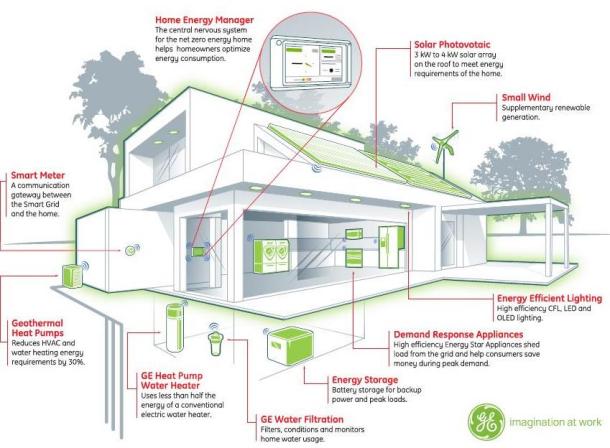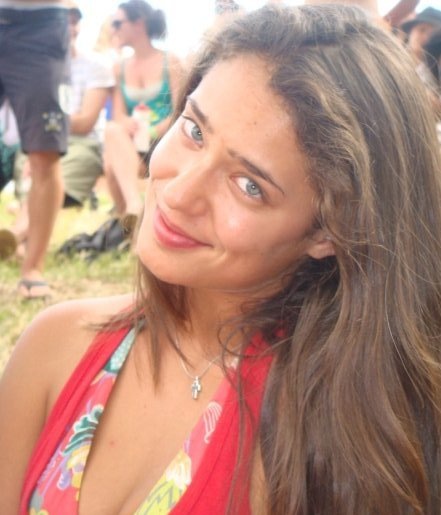
As children we learn from fairy tales, the ones we read in picture books, and were left to contemplate in our dreams as we drifted off after bedtime stories. Much like the story of Alice in Wonderland. Lessons are woven through the introduction of imaginary characters, there is always a villain and a hero, together creating some kind of black and white picture lesson ingrained into the minds of youths. As we grow older we see the pictures differently and learn to recognize the shades of grey spreading between the black and white but the image from the lesson remains imprinted into our minds. Reading about the latest developments in sustainable building and Net Zero Energy buildings reminded me of the three little pigs and the big bad wolf.
The lesson seems to come down to building strong foundations. We can choose to translate this literally into how we construct our infrastructure or, more figuratively, our lives. What I have taken from this story is that our brick buildings will need to be sustainable and the cement we use needs to be made of resiliency.
When we hear about climate change, science does not want to say that climate change directly causes adverse weather effects and natural disasters but it recognizes a correlation between climate change and the increased frequency of adverse weather effects and natural disasters (see Intergovernmental Panel on Climate Change, Synthesis Report, 2007). Given the changes in weather and natural disasters across the world this lesson in resiliency seems more important than ever. If the big bad wolf is climate change, in this story, it seems he has been huffing and puffing quite a lot of late.
The New York Times (http://www.nytimes.com/2012/07/08/us/temperatures-soar-as-heat-wave-continues.html) reported a record-setting heat wave spreading from St. Louis to Washington, which has culminated in 36 weather-related deaths, “buckled roadways” and two trains being derailed. Overall this has been reported as the hottest summer recorded for the Northern hemisphere (http://www.guardian.co.uk/commentisfree/2012/jul/04/climate-changes-extreme-weather-us-heatwave ). I’m sure we’ve heard those words before, if not several times and either we can put that down to the media seeking attention for the weather, or for those less optimistic, perhaps we are the proverbial frogs in the boiling water becoming accustomed to the temperature rising and abnormal weather events becoming the norm. Recent earthquakes in Italy certainly seem different to the norm (http://articles.cnn.com/2012-05-29/world/world_europe_italy-earthquake_1_58-magnitude-earthquake-60-magnitude-quake-quake-response?_s=PM:EUROPE). No one in the region can remember as many earthquakes occurring in such a short time frame. The Royal Society published papers to the effect that climate change could even affect the earth’s crust, which could increase the incidence of earthquakes and volcanic activity (http://www.dailymail.co.uk/sciencetech/article-1267137/Climate-change-spark-volcanoes-earthquakes-tsunamis.html).
One of the most remarkable things about human beings is said to be our ability to adapt. Growing up in South Africa our winters were never as severe as those I encountered in Europe and the USA, but in both I noticed the way they adapted to their weather conditions in a very specific way- building temperature control. I learnt that in winter it is wise to wear something light under the layers I put on to guard me from the cold outside, so as to be able to cope with the heat inside. In summer I learnt it was wise to bring a jersey/sweater if I was going to be inside so that I wouldn’t get cold.
So far we have learnt to adapt to the seasons by equipping our buildings with devices that make the weather inside more favourable than the conditions we experience outside. This has proven to be a short-term fix. Heating and cooling is the most energy intensive characteristic of our buildings, it accounts for half of all the energy used in buildings and one third of global final energy consumption, (http://www.iea.org/publications/free_new_Desc.asp?PUBS_ID=2400 ).
Consequently this is a major source of greenhouse gas emissions, but through energy efficiency and low/zero carbon heating and cooling technology we have the potential to reduce around 2gigatons (Gt) of C02 emission by 2050. The good news is that not only is much of this technology commercially available but it is being used. Could this be the new brick house?
One of my favourite blogs Clean Technica (www.cleantechnica.com) reported on the latest developments in Philadelphia as they endeavor to become the greenest city in the USA through “super-green” developments. The Nexus Energyhomes development is developing energy efficient homes in the Northern Liberties community in Philadelphia. By combing efficient air filtration, volatile compound (VOC) building materials, energy recovery and geo-solar technology they are hoping to produce Net Zero Energy homes, with the highest green building standards in line with the National Association of Homebuilders (NAHB). The mix of this technology is said not only to be sustainable but will also allow residents to enjoy plummeting utility bills.
A Net Zero Energy Building (NZEB) is a relatively new concept used to describe a building, which produces the same amount of energy per year as it uses. Although there are only a few of these such buildings the advances in technology are making them more feasible. The exact metrics tend to vary but there is an overall consensus according to the National Institute of Building Science in the USA (http://www.wbdg.org/resources/netzeroenergybuildings.php) that the building design minimizes energy requirements and uses renewable energy systems to meet energy demand.
There are four ways according to the Department of Energy and the National Renewable Energy Laboratory to define net zero energy, these are: Net Zero Site Energy, Net Zero Source Energy, Net Zero Energy Costs and Net Zero Energy Emissions. For those more interested in the specifics you may want to look at this: http://www.nrel.gov/docs/fy06osti/39833.pdf.
While this seems to work best for smaller buildings and homes, it is increasing in popularity and larger buildings are giving it a try as the communications Director of the New Buildings Institute recently noted: http://www.scientificamerican.com/article.cfm?id=net-zero-energy-buildings-in-us. This is a development, which is likely to make the US Green Building Council with all their LEED ratings smile, just like a Cheshire cat.
What is the caveat to all of this? Well to draw on the reminder sent out by Dr. Sandra Knight of FEMA at the first-annual Dupont Green Week this year in Washington DC: in the face of climate change construction also needs to be safe and resilient. Her message is that while powering on in an energy efficient manner we shouldn’t forget to think about resiliency.
In one sense energy efficiency is resilient in itself, but as consumers I imagine that we have to ensure that the buildings are also strong enough to withstand the worst huffing and puffing of the big bad wolf.




 RSS Feed
RSS Feed
